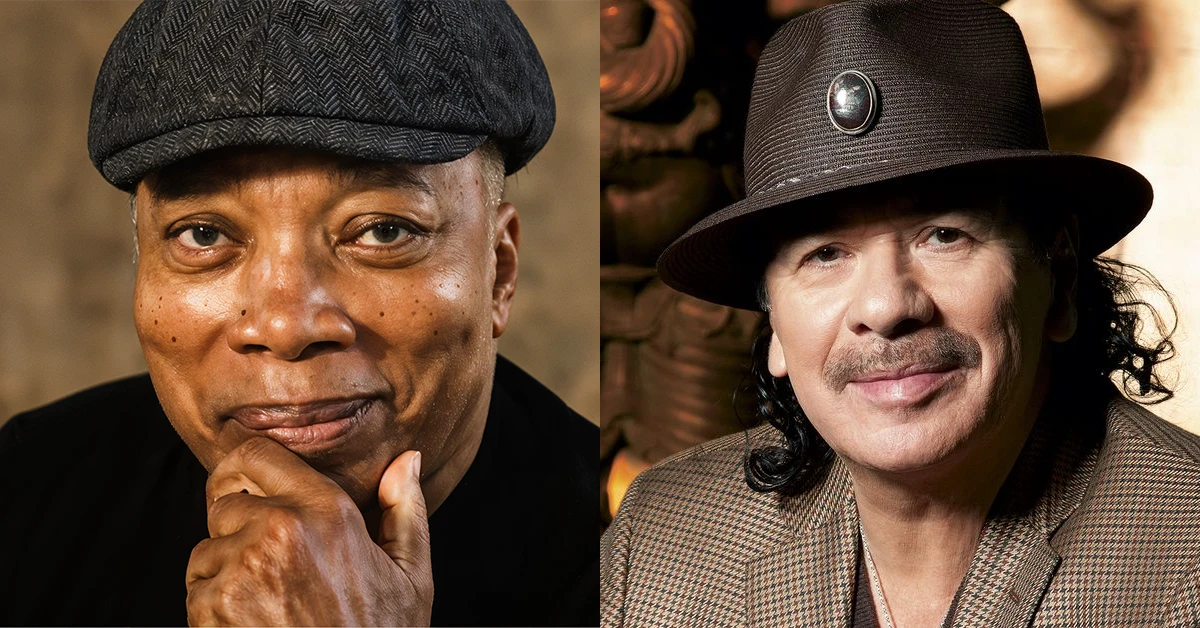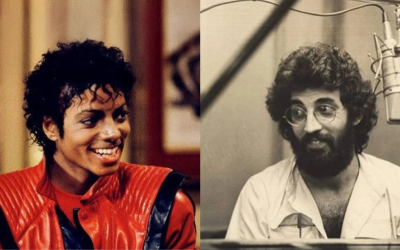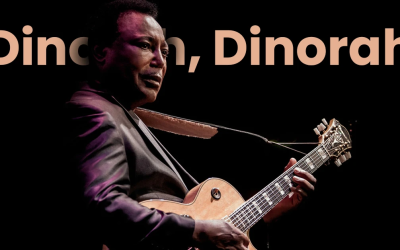When you search for “Maria, Maria” on Google, you’ll discover there’s more than one song with this name. In fact, two of the most famous Maria Maria songs compared come from vastly different worlds, yet both have captivated audiences across the globe. One tells the story of 60 million Brazilian women struggling against systemic oppression, while the other portrays the dreams of a Latina woman in New York’s Spanish Harlem. These are the tales of Milton Nascimento’s Brazilian masterpiece and Carlos Santana’s global hit—two songs that share a name but tell completely different stories.
The Brazilian Original: A Song Born from Social Reality
The Maria Maria original version emerged from the creative genius of Milton Nascimento Santana Maria comparison begins with understanding Milton’s 1976 composition. Unlike many songs born in recording studios, “Maria, Maria” first came to life as part of a dance performance by Grupo Corpo, with music by Milton Nascimento and narrative by Fernando Brant.
This Brazilian vs American Maria Maria story starts in the favelas and rural areas of Brazil, where the name Maria represents millions of women facing poverty, early marriage, and racial discrimination. The Brazilian version, released on the Clube da Esquina 2 album in 1978, is deeply rooted in music social commentary, addressing the harsh realities of Black Brazilian women who, as the lyrics state, have “a strange habit of having faith in life.”
Milton’s composition is characterized by its modal harmonies, jazz influences, and the distinctive sound of the Clube da Esquina Santana movement—though Santana had no connection to this Brazilian artistic collective. The song’s power lies in its ability to translate the strength and resilience of marginalized women into a musical language that speaks to the soul.
The Brazilian “Maria, Maria” is not about one woman; it’s about countless Marias who represent the collective struggle of Brazilian women. It’s a song that emerged from a specific social and cultural context, making it an authentic piece of music social commentary that continues to resonate decades after its creation.
The American Interpretation: Dreams in Spanish Harlem
Twenty-one years later, in 1999, Carlos Santana released his version of “Maria Maria” on the Supernatural album, creating an entirely different narrative. This Maria Maria songs compared analysis reveals how the American version, while sharing the name, tells a completely different story.
Santana’s “Maria Maria,” featuring The Product G&B and heavily influenced by Wyclef Jean and Jerry “Wonder” Duplessis, portrays a Latina woman living in Spanish Harlem, New York. The song focuses on individual aspirations, dreams, and the urban struggle for success in America. It’s a narrative of personal ambition and the pursuit of the American Dream, set against the backdrop of Latin rock, hip-hop, and R&B influences.
The Brazilian vs American Maria Maria comparison shows how Santana’s version represents a more individualistic approach to storytelling. While Milton’s Maria represents a collective of women facing systemic oppression, Santana’s Maria is a specific character with personal dreams and ambitions. The American version celebrates the strength and beauty of a Latina woman navigating urban life, but it lacks the broader social commentary that defines the Brazilian original.
Musically, Santana’s version showcases his signature guitar style blended with contemporary genres, creating a sound that appealed to global audiences and helped the Supernatural album become one of the best-selling albums of all time.
Two Marias, Two Worlds
The Milton Nascimento Santana Maria comparison reveals fascinating contrasts in how different cultures approach storytelling through music. Milton’s Maria is rooted in Brazilian social reality, emerging from a specific historical and cultural context where the name Maria carries the weight of millions of women’s experiences.
Milton Nascimento, a multi-Grammy winner and one of Brazil’s most respected musicians, created his “Maria, Maria” as part of the Clube da Esquina movement—an artistic collective that revolutionized Brazilian music by incorporating jazz, folk, and classical influences while maintaining strong social consciousness. The song’s creation process, involving dance, theater, and music, reflects the multidisciplinary approach that characterized this movement.
Carlos Santana, also a multi-Grammy winner and guitar legend, approached his “Maria Maria” from a different perspective. His version was part of the Supernatural album’s strategy to blend his classic Latin rock sound with contemporary genres, collaborating with younger artists to reach new audiences. The song won a Grammy Award for Best Pop Performance by a Duo or Group with Vocals in 2000, cementing its place in popular music history.
Musical Styles: MPB Meets Latin Rock
The Maria Maria songs compared analysis extends to their musical arrangements and stylistic approaches. Milton’s version embodies the essence of MPB (Música Popular Brasileira), with its sophisticated harmonies, subtle rhythmic complexity, and emphasis on melodic beauty. The song’s arrangement allows space for contemplation and emotional depth, reflecting the serious nature of its social message.
Santana’s version, in contrast, is built for commercial appeal and danceability. It features driving rhythms, prominent guitar riffs, and a production style designed for radio play and club environments. The fusion of Latin rock with hip-hop and R&B elements created a sound that was both familiar and fresh to American audiences.
This difference in musical approach reflects the different purposes each song serves. Milton’s “Maria, Maria” functions as both art and activism, using music social commentary to shed light on social issues. Santana’s version serves primarily as entertainment, though it still carries cultural significance in representing Latino experiences in American popular music.
Cultural Impact and Legacy
The Brazilian vs American Maria Maria comparison extends to their cultural impact and lasting legacy. Milton’s version has become an unofficial anthem for Brazilian women, particularly Black women, and continues to be relevant in discussions about social justice and equality. It’s frequently cited as one of the most important songs in Brazilian music history and has influenced generations of musicians and activists.
Santana’s version achieved massive commercial success, topping charts worldwide and introducing millions of listeners to Latin-influenced music. It played a crucial role in the Latin music boom of the late 1990s and early 2000s, paving the way for other Latino artists to achieve mainstream success.
Both songs, despite their differences, have contributed to the global appreciation of Latin and Brazilian music. They demonstrate how the same name and basic concept can be interpreted through different cultural lenses, creating entirely different artistic statements.
The Power of Perspective
What makes the Maria Maria songs compared analysis so fascinating is how it reveals the power of cultural perspective in artistic creation. Both Milton Nascimento and Carlos Santana are masters of their craft, both have won multiple Grammy Awards, and both created songs that resonated with millions of people. Yet their approaches to the “Maria” story reflect their different cultural backgrounds, artistic movements, and intended audiences.
Milton’s Maria emerges from the specific reality of Brazilian social inequality, representing the collective struggle of marginalized women. It’s a song born from observation, empathy, and a desire to give voice to the voiceless. The Clube da Esquina Santana comparison shows how Milton’s artistic movement prioritized social consciousness alongside musical innovation.
Santana’s Maria represents the immigrant experience and the pursuit of dreams in urban America. It’s a celebration of Latino culture within the context of American popular music, reflecting the melting pot nature of American society and the ongoing struggle for cultural representation in mainstream media.
Two Grammys, Two Stories
Both versions of “Maria, Maria” have been recognized with Grammy Awards, highlighting their artistic merit and cultural significance. Milton Nascimento’s multiple Grammy wins throughout his career include recognition for his broader body of work, of which “Maria, Maria” is considered a cornerstone. Santana’s specific Grammy win for “Maria Maria” in 2000 marked a high point in his career resurgence and validated the artistic success of cross-cultural collaboration.
The Milton Nascimento Santana Maria comparison ultimately shows how great artists can take similar inspiration and create completely different masterpieces. Both songs honor women named Maria, both celebrate strength and resilience, and both have touched millions of lives. Yet they remain distinctly different in their approach, execution, and cultural significance.
Conclusion
The story of these two “Maria, Maria” songs is really the story of how music transcends borders while remaining deeply rooted in specific cultural contexts. When Maria Maria songs compared, we see not just two different songs, but two different approaches to artistic expression, social commentary, and cultural representation.
Milton Nascimento’s Maria Maria original version remains a powerful piece of music social commentary, continuing to inspire discussions about social justice and women’s rights in Brazil and beyond. Carlos Santana’s version stands as a testament to the power of cross-cultural collaboration and the ongoing evolution of popular music.
Both songs, in their own ways, have contributed to our understanding of the Maria story—whether she’s struggling in a Brazilian favela or pursuing dreams in Spanish Harlem. They remind us that behind every name, every story, and every song, there are real people with real struggles and real dreams. And sometimes, it takes two different artists, from two different worlds, to tell the complete story.
The Brazilian vs American Maria Maria comparison ultimately enriches our appreciation for both versions, showing how the same inspiration can bloom into entirely different flowers, each beautiful and meaningful in its own right.
References
- The Stringuy: https://youtu.be/JXW05R7PNFE
- Milton Nascimento (Wikipedia): Milton Nascimento. https://en.wikipedia.org/wiki/Milton_Nascimento
- Carlos Santana (Wikipedia): Carlos Santana. https://en.wikipedia.org/wiki/Carlos_Santana
- Supernatural (Santana album) (Wikipedia): Supernatural (Santana album). https://en.wikipedia.org/wiki/Supernatural_(Santana_album)
- Clube da Esquina (Wikipedia): Clube da Esquina. https://en.wikipedia.org/wiki/Clube_da_Esquina
- Grammy Awards Database: Maria Maria – Santana. https://www.grammy.com/artists/santana/8052
- AllMusic: Clube da Esquina 2 – Milton Nascimento. https://www.allmusic.com/album/clube-da-esquina-vol-2-mw0000122708
- Rolling Stone: Santana’s ‘Supernatural’ at 20. https://www.rollingstone.com/music/music-album-reviews/supernatural-105360/





